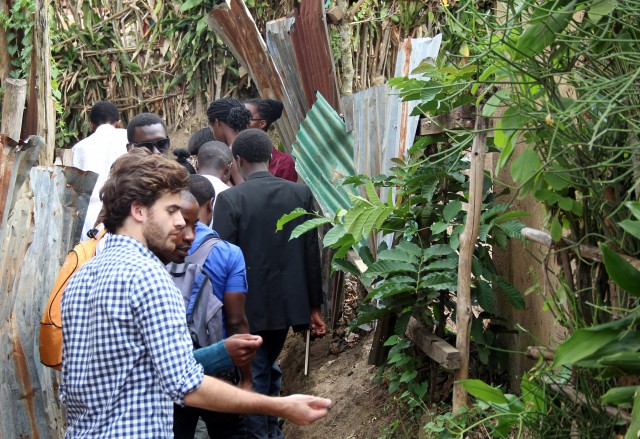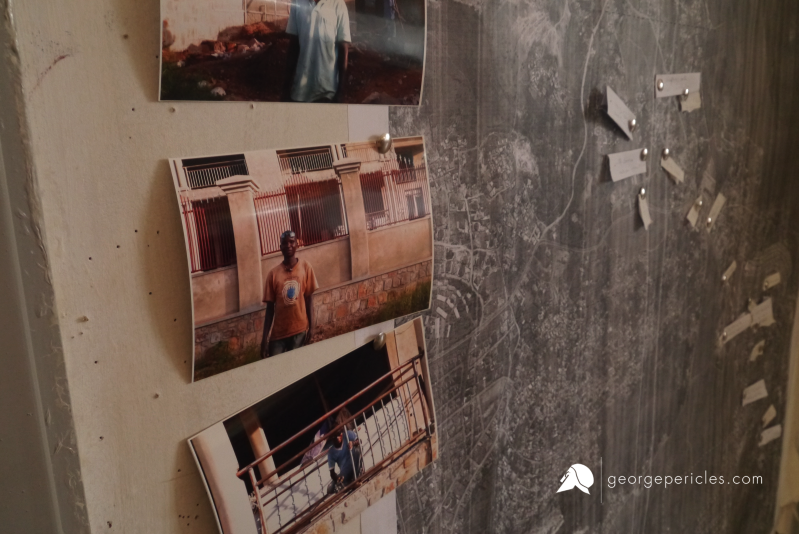One of the fastest-growing cities in the world is Rwanda’s capital Kigali, and its challenges are as complex as any other urban centre’s. Designer-architect Guillaume Sardin explains how a new documentary research project led by his think tank and a team of Rwandan architecture students hopes to unveil the inner dynamics of one of its most diverse neighbourhoods.
SCOPE: Tell us a little bit about your project Learning from Kigali. What are you trying to accomplish?
GS: Learning from Kigali is a research project sponsored by Turkish Airlines and curated by the George Periclès think tank. With a team of both French and Rwandan architects and students, we want to bring a fresh point of view to urban development in Rwanda. The team is comprised of Laureline, Olga, Minerve, Irene, Flavia, Enock, Jean-Damascène, Victor, Joe, Eric, Emmanuel, Medard, Alain-Yves, Jean-Claude, Jérémy and me.
We decided to look at the Kinyinya sector, on the fringe of Kigali. Eight years ago, it was a forest. Today, this sector is an open-air laboratory — you can almost see the future there. According to the Kigali master plan, Kinyinya is meant to become a sub-center for northern Gasabo district.
Learning from Kigali aims to look at what’s happening in the capital of Rwanda in order to draft home-grown solutions for the future.
Do you expect that the things you learn will be applicable to other fast-growing cities around the world?
Each context has its own solution, but the multi-scale approach we’ve developed is applicable to other cities. This methodology is attentive to the context, the existing conditions. I think that all cities should be aware of what we call “the urban intelligence”, the way inhabitants create and transform spaces to fit their needs. Most of the time planification falls short and just develops sterile and unsuccessful spaces.
At George Periclès, we believe that each project should be tailored to the context: cultural, social, economic, and so on. World-scale projects, if they are not adapted to the site, are bound to fail.
What kind of challenges and opportunities does a city like Kigali face at this stage in its evolution?
Kigali and Rwanda are experiencing drastic changes. The country is at a turning point in its history as the rural population moves to the cities. Rwanda should be creating its own urban culture and not just copying-and-pasting ones from abroad.
The challenges that Kigali is facing are numerous. The major one is the question of how the city can be designed for everybody, of how the future Kigali will welcome the poor as well as the wealthy. Transportation, the design of public spaces, and cultural appropriateness are also very important; there’s a need to address and integrate these issues. In order to do so, we need to look at how people organize their spaces today. Learning from Kigali is a first step in that direction.
Is this project typical of the work George Periclès does? What prompted you to establish the firm?
Research is an integral component of our practice. Research helps us to understand local conditions.
Actually, George Periclès is not a “firm”; it’s a group of architects and design consultants. I co-founded George Periclès with Anais Le Grand in 2011. We established the think tank to create a space to experiment with new ideas and new approaches to culture and development. Development is too often envisioned as a matter of numbers. For us, development in any country should include an appropriate design approach.
On your website you use the term “cultural design”. What do you mean by that?
Cultural design is a way to surmount the opposition between tradition and modernity. Contrary to what people think, modernity is not generic.
We think cultural design is important because it preserves cultural diversity, which is as important as biodiversity. Heritage and preservation is not the only way to do this. By re-interpreting traditions, we make them alive, active. So far in Rwanda we have successfully developed cultural design projects in various fields, from nation-branding to urban planning and affordable housing.
Which thinkers have been most influential for you in regard to developing the methodology for Learning from Kigali? What precedents are there for this type of study?
Our methodology is influenced by the work done by [Italian architect and urban designer] Stefano Boeri and his team: their project, Uncertain States of Europe (USE), merges on-site investigations and photography. To a greater extent, “applied” sociology has been the foundation stone of the project. It’s something I learned at the Nantes School of Architecture, under teachers like Elisabeth Pasquier and Michel Amphoux.
The approach and sensibility of Édouard Glissant, a French poet from Martinique, also had a huge influence on our methodology. By looking at the details of language and behaviour in the Caribbean, Glissant developed the idea of perpetual creolization: the notion that no culture stands apart from others, that all are the results of mixing and exchanges.
What is your own background and how did it lead you to Kigali?
I’m an architect and design consultant. I hold a M.Arch from the Ecole Nationale Supérieure d’Architecture de Nantes. I worked in France and in New York. I moved to Kigali two years ago after visiting the country. I saw a nation recovering from its past. It was very motivating to have the opportunity to go back as an architect and lecturer. I think that my designer background and my interest in cultural design can be useful here. Being in Rwanda is very inspiring.
For further information on the Learning from Kigali project, visit http://www.georgepericles.com/


